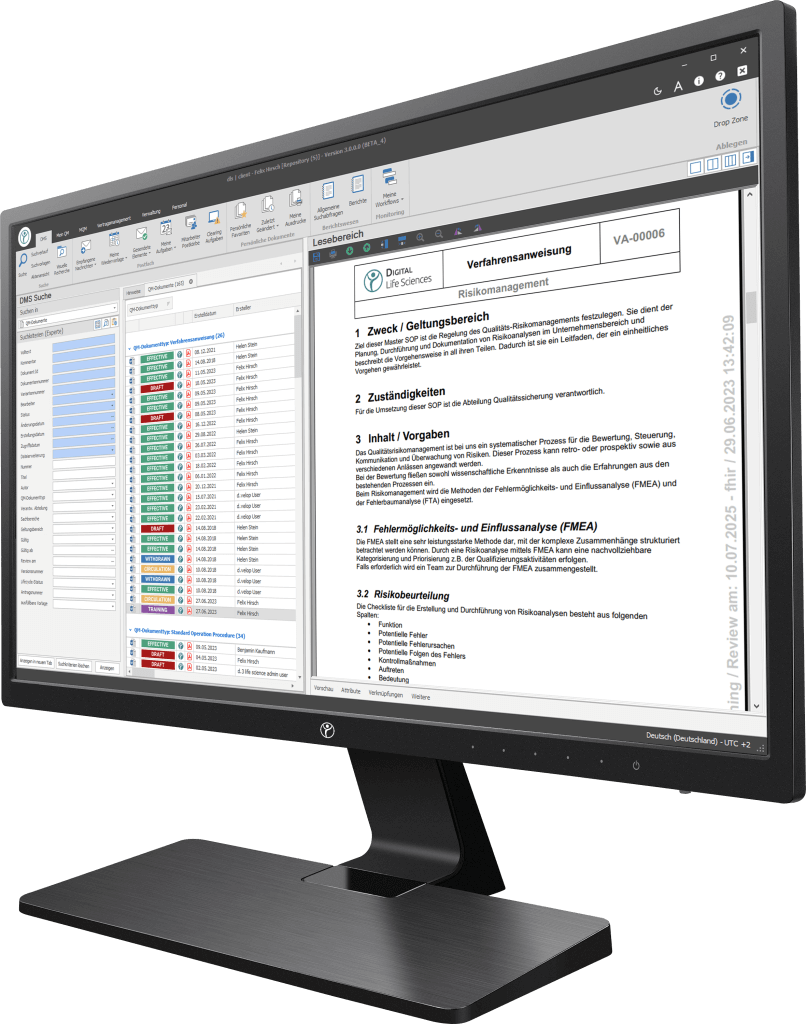Definition of the term (“What is a process audit?”)
A process audit is a systematic approach to reviewing and evaluating business processes in an organization. The aim is to ensure that these processes are carried out in accordance with the defined standards and guidelines. The main objective of a process audit is to identify irregularities or deficiencies in business processes and propose measures for improvement.
Why is a process audit important?
- Quality assurance: A process audit is an essential part of quality management. It helps to ensure that a company’s products or services meet the highest quality standards. This is critical to guarantee customer satisfaction and maintain customer trust in the brand.
- Efficiency improvement: By regularly reviewing and evaluating business processes, companies can identify inefficiencies and shortages. This enables them to optimize their processes and increase productivity.
- Risk reduction: Process audits help companies to identify risks and develop measures to minimize them. This is especially important in industries where security and compliance are of utmost significance.
Your path to digitization — Discover our software
Our digitization solutions primarily address document-based processes in manufacturing, production and quality management. The basis of the dls | eQMS is a holistic ECM/DMS system. The ECM/DMS system can be connected to your existing ERP system (e.g. SAP) and, thus, map almost all document-based processes in the company.

Steps in performing a process audit
- Planning: Define the objectives of the audit and create an audit plan. Define the processes to be reviewed and identify the relevant stakeholders.
- Implementation: Perform the audit according to the audit plan. Collect data, conduct interviews, and review documents and records.
- Evaluation: Analyze the collected data and evaluate the processes for efficiency and compliance with standards.
- Reporting: Create an audit report that summarizes findings, deficiencies, and recommendations.
- Measure plan: Develop a measure plan together with the relevant teams to resolve the identified deficiencies and continuously improve the processes.
The advantages of process audits
- Quality improvement: By identifying deficiencies, companies can improve their processes and increase the quality of their products or services.
- Cost savings: Optimizing processes often leads to cost savings as resources are used more efficiently.
- Customer Satisfaction: High-quality products and services lead to satisfied customers who return and generate positive word of mouth.
Conclusion
Process audits are an indispensable tool for companies to ensure quality assurance, efficiency, and risk management. By regularly reviewing and improving their processes, companies can remain competitive and strengthen customer loyalty.
Start your digital transformation with our powerful, modular software solutions
Frequently Asked Questions (FAQs)
What is the difference between a process audit and a quality audit?
A process audit focuses on reviewing and improving business processes, while a quality audit evaluates an organization’s overall quality assurance.
How often should process audits be performed?
The frequency of process audits can vary depending on the industry and company requirements. As a rule, however, they are carried out annually or semi-annually.
What role does digitization play in process audits?
Digitization has made process audits more efficient by making it easier to collect and analyze data. It also enables real-time monitoring of processes.
Can a process audit lead to certification according to quality standards such as ISO 9001?
Yes, a successful process audit can help to obtain or maintain certification according to quality standards.
What are the differences in a process audit?
Process audits are conducted according to a predefined audit plan. They can either be performed with reference to the system or the project. System-oriented process audits only audit directly affected processes and not the entire production process. In the project-oriented process audit, on the other hand, the audit takes place at fixed intervals within a development and planning process in order to be able to detect deficits immediately.
